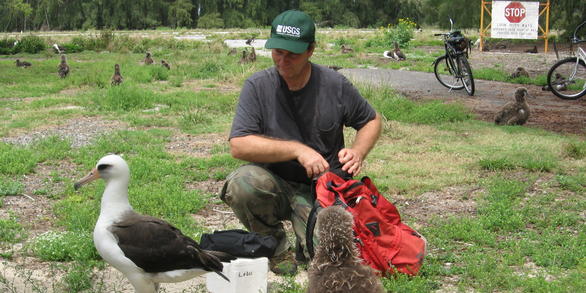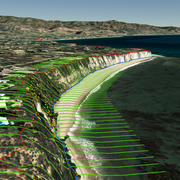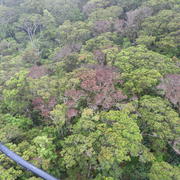Pacific Island Ecosystems Research Center
Home
Research at the Pacific Island Ecosystems Research Center focuses on providing the scientific understanding and technologies needed to support and implement sound management and conservation of our Nation's biological resources occurring in Hawai'i and other Pacific island locations.
Spotlight on Research
Learn more about how researchers are tracking how rare plants are responding to changing environmental conditions.
Plant ResponsesFeatured Scientist
PIERC Microbiologist Dr. Carter Atkinson is using new tools to detect emerging threats and rare species in Pacific Island ecosystems.
Atkinson ResearchNews
Coastal Change Happens! USGS Has Data and Tools to Help Coastal Communities Prepare
USGS Introduces a National Approach to Coastal Change Hazards (CCH) Science
New Study Finds the Restoration of Forests with Active Rapid ʻŌhiʻa Death Infections May Be Possible
Hilo, Hawaiʻi – For the first time, researchers have shown that native ʻōhiʻa seedlings can survive for at least a year in areas that have active mortality from Rapid ʻŌhiʻa Death, or ROD, a fungal disease that is devastating to this dominant and culturally important tree in Hawaiian forests. This information can be useful to land managers and homeowners as they prioritize conservation actions.
Keeping Track of "Caly"
Caly isn't likely to wonder off off, but with a remote camera and monitoring station online 24-hours a day, USGS and partners at the State of Hawai‘i Division of Forestry and Wildlife, University of Hawai‘i, and the USFWS can learn how an extremely rare plant is responding to changes in environmental conditions.
Publications
Survival of Laysan Teal Anas laysanensis differs among island populations: Role of chronic avian botulism
Monitoring demographic response over time is valuable for understanding population dynamics of endangered species. We quantified the variation in survival patterns for three small isolated island populations of endangered waterfowl in the Hawaiian Archipelago. Laysan Teal Anas laysanensis were individually marked and the fate of 1,150...
Reynolds, Michelle H; Hatfield, Jeffrey; Courtot, Karen; Vanderlip, Cynthia2018 Kaua'i forest bird population estimates and trends
Kaua‘i's native forest birds have experienced steep declines since the beginning of systematic surveys in 1981, and declines have accelerated in recent decades. This report details the analysis of the most recent surveys conducted in 2018. Incorporating the new survey results, long-term trends continue to show sharp declines for all native...
Paxton, Eben H.; Brinck, Kevin W.; Crampton, Lisa H.; Hite, Justin; Costantini, MariaDecontamination of Ceratocystis pathogens responsible for rapid ʻŌhiʻa Death
Rapid ʻōhiʻa death (ROD) is caused by two recently described species of Ceratocystis, C. lukuohia and C. huliohia. These fungi are decimating ʻōhiʻa lehua (Metrosideros polymorpha), the keystone native tree species of Hawaiʻi. Viable Ceratocystis propagules can persist in ambrosia beetle frass (Coleoptera:...
Roy, Kylle; Jaenecke, Kelly; Bjontegard, Nikko; Mikros, Dan; Dunkle, Ellen; Yanger, Corie; Sugiyama, Lionel S.; Keith, Lisa M.; Peck, Robert W






